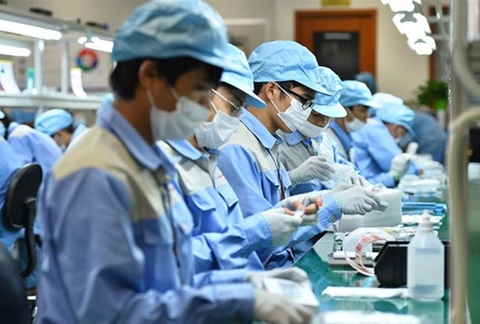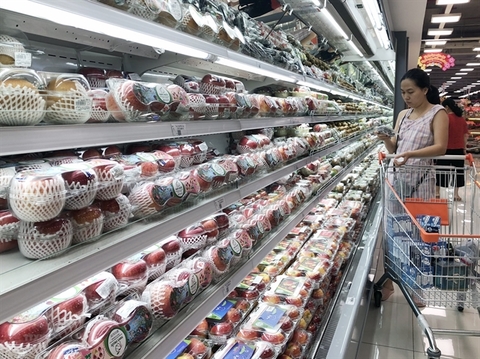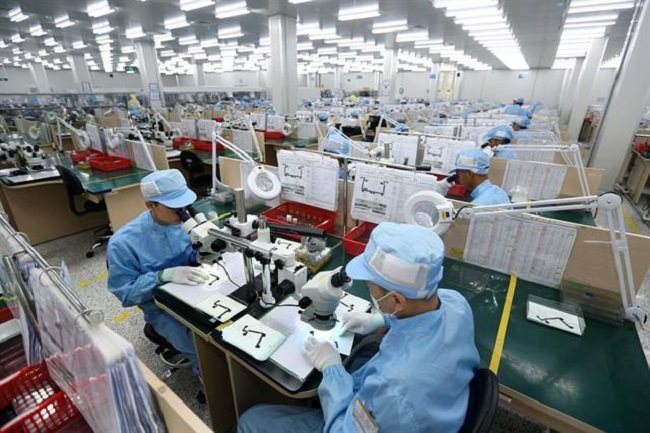Vietnam gets no benefit from US-China trade war
Vietnam gets no benefit from US-China trade war
Vietnam is not benefiting from the U.S-China trade war as previously forecast because foreign firms are the ones reaping all the export fruits.
A recent report by financial data provider Fiin Group shows that foreign-invested firms account for almost all the increase in exports to the U.S. as its trade spat with China intensifies.
In the garments sector, for example, Vietnamese companies only accounted for 16 percent of the export value from June 2018-2019, with FDI firms making up the other 84 percent.
South Korean garment manufacturers in Vietnam have been the biggest winners from the trade war, with 143 South Korean companies accounting for almost half of Vietnam’s garment export value in the period, the report said.
It said South Korean corporations were better placed to reap the gains because they have been in Vietnam since early 2000s and have well established supply chains in the country.
"The majority of Vietnamese companies are still small-d and do not meet foreign buyers’ requirements on quality, quantity and cost," the report said.
A similar situation could be seen in the export of phones and parts. South Korean and Taiwanese companies accounted for 98 percent of Vietnam’s total export of phones and parts in the year ending in June 2019, dominated by Samsung and Foxconn, a Taiwanese key supplier for Apple.
Vietnamese firms only contributed indirectly to the export growth by supplying some parts for these foreign companies, it added.
U.S. buyers still prefer products from China because prices are more competitive than that of Vietnamese products.
The Fiin report said an American buyer has to pay $55 for a reflective clothing item produced by a Vietnamese firm, while the same product from a Chinese company costs 50 percent less at $27.
The reason is that Vietnamese companies have to import most of the raw materials, such as fabric and reflective material, from China. Even with tariffs added, Chinese companies can still provide products at lower prices than Vietnamese companies, the report said.
"Local companies typically import many of their materials from China for production. Many American customers continue to buy from their partners in China, or from FDI companies manufacturing in Vietnam."
Some experts also say that increasing exports to the U.S. at this time is a negative development as Vietnam has been included in the U.S.’s currency manipulation watchlist for having a high trade surplus.
Nguyen Thi Thu Trang, director of the Center for WTO and Integration under the Vietnam Chamber of Commerce and Industry, said at a conference last week that Vietnam was among the top 10 countries with the biggest trade surpluses with the U.S. in the first six months.
Among these 10 countries, only Malaysia and Vietnam have not been hit with U.S. trade defense measures. But while Malaysia and the other nine countries have seen their exports growth to the U.S. decline in the period, only Vietnam’s grew 27 percent, she added.
No production shift
The expected shift in production has also not happened. Japanese companies, for example, are reducing their capital in China and increasing it in other countries but not Vietnam, Trang said.
Many foreign firms are also returning to their old strategy of focusing on producing in China for the Chinese market instead of exports, she added.
Several experts had warned earlier that China might export its goods via Vietnam to the U.S. In the first seven months, Vietnam’s exports of computer and components to the U.S. rose 85 percent year-on-year, but its imports from China also rose 66 percent.
In recent months, customs authorities have found products imported from China repackaged with "Made in Vietnam" labels, and the government is strengthening inspections to prevent such violations.
Trang said that free trade agreements like the Comprehensive and Progressive Agreement for Trans-Pacific Partnership (CPTPP) should be the key growth motivators for Vietnam, as they will urge FDI companies to select the country for its "real advantages," not just as a safe haven during a trade war.
In the first eight months, the U.S. was Vietnam’s largest export market with a turnover of $38.6 billion, up 25.3 percent year-on-year, followed by the EU, China, ASEAN and Japan.
Meanwhile, China was the country's biggest import market with a turnover of $49.2 billion, accounting for 18.2 percent of all imports, followed by South Korea, ASEAN, Japan and the EU.






















